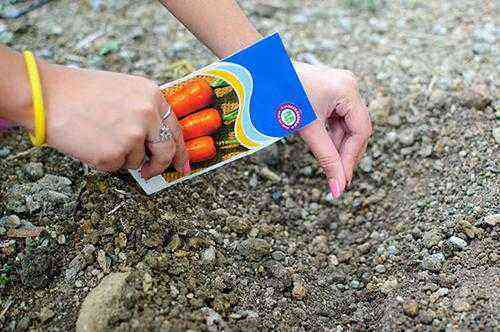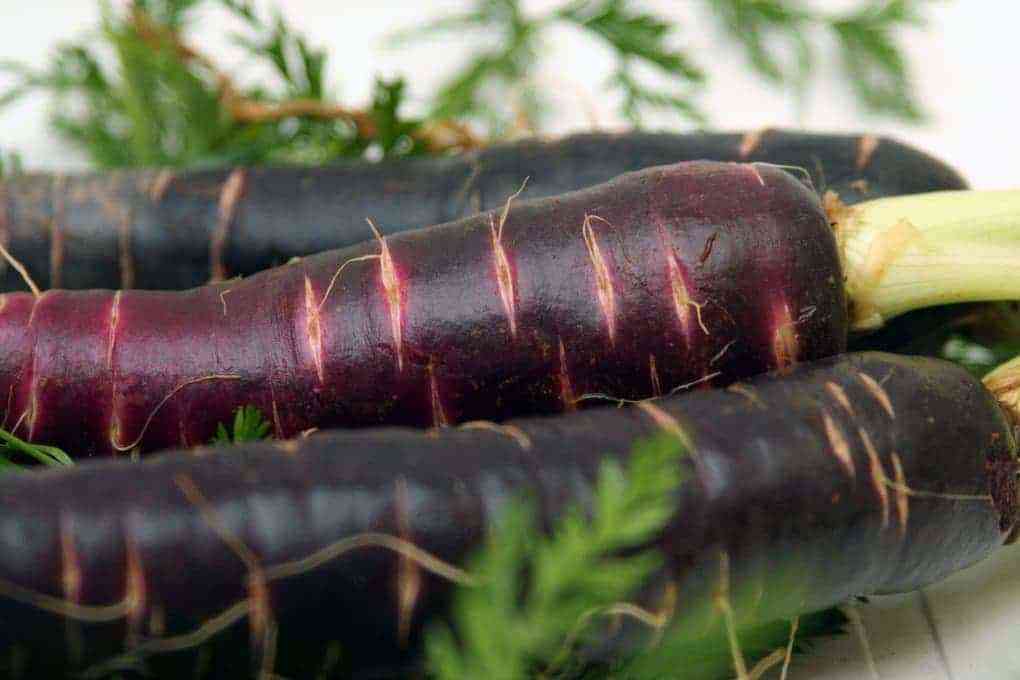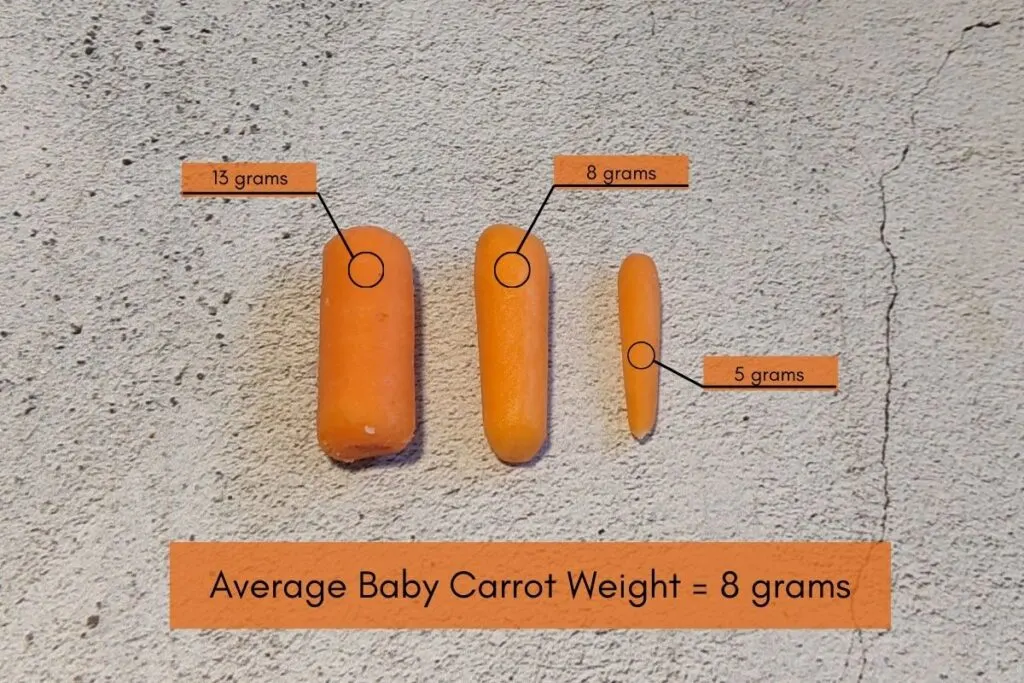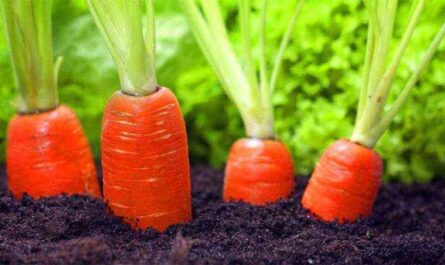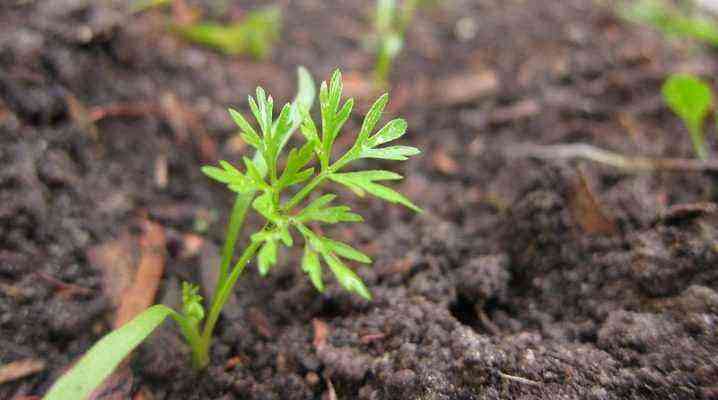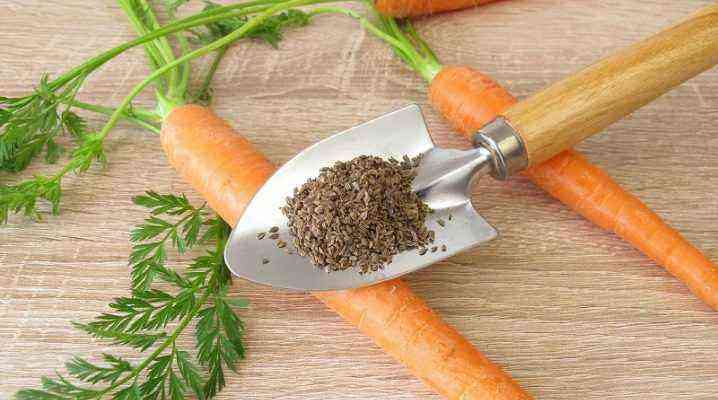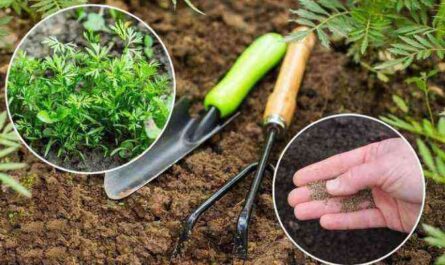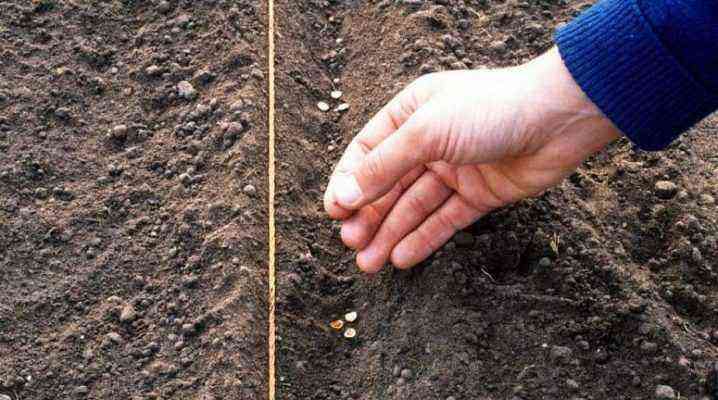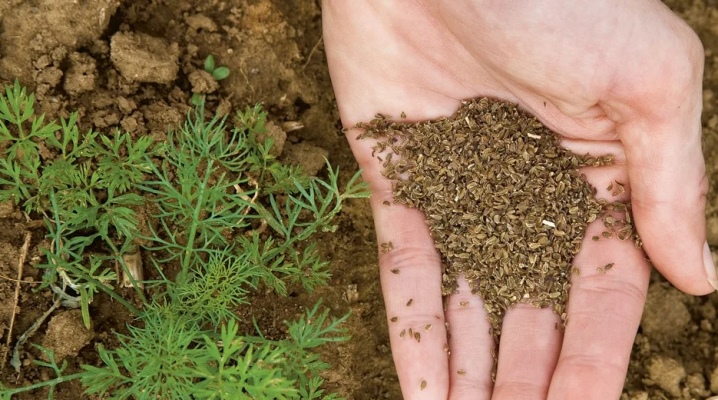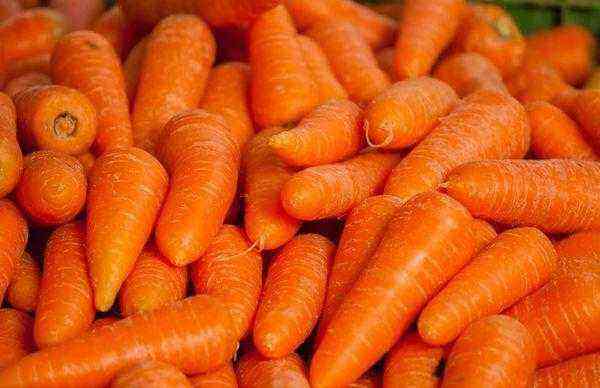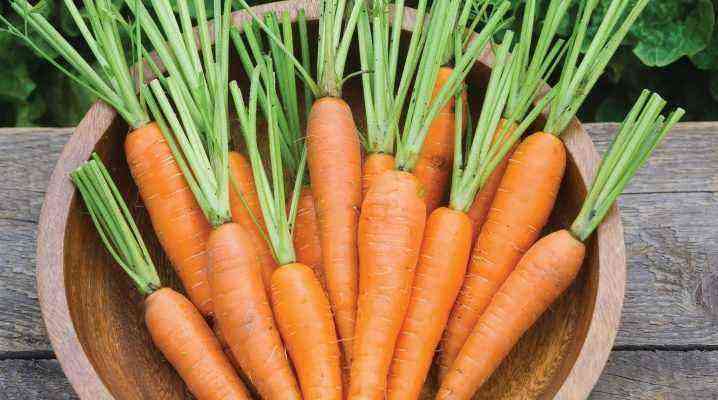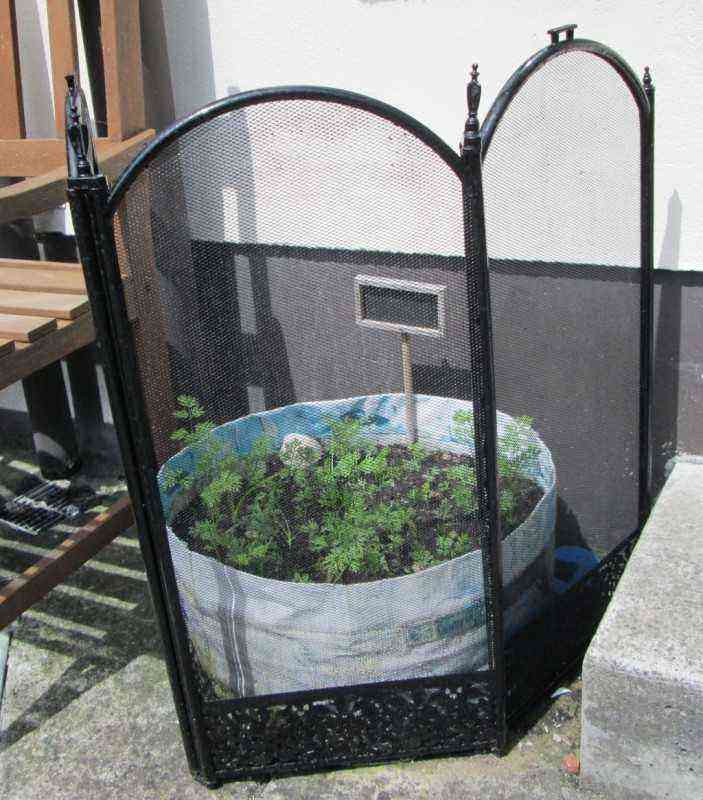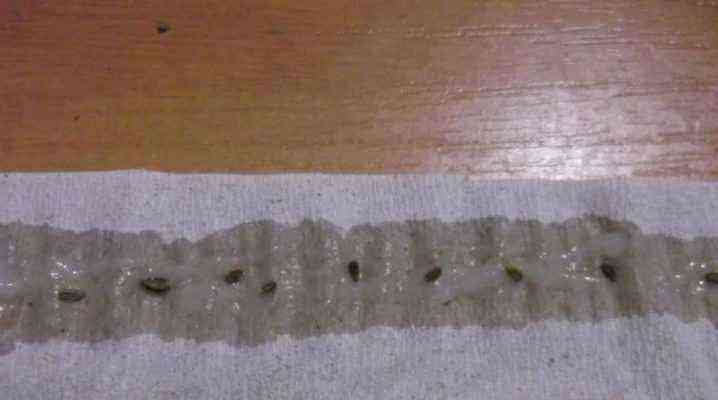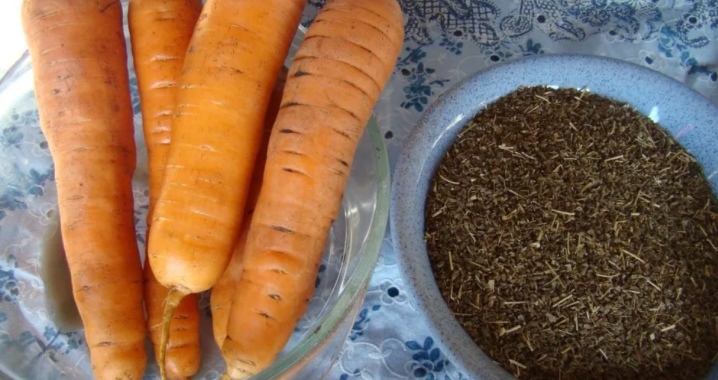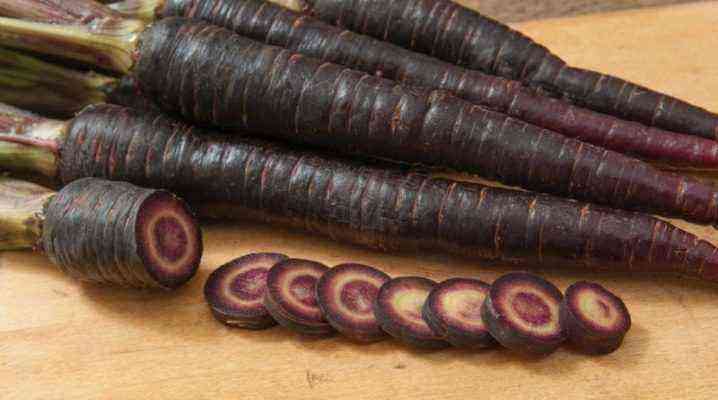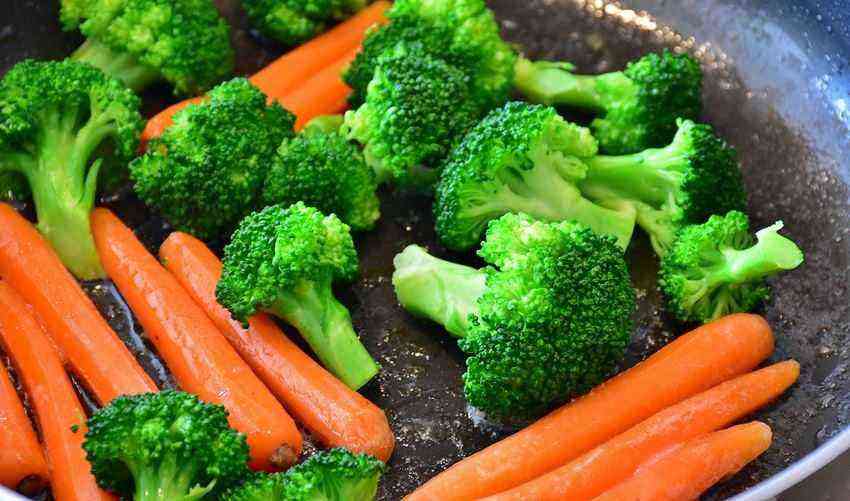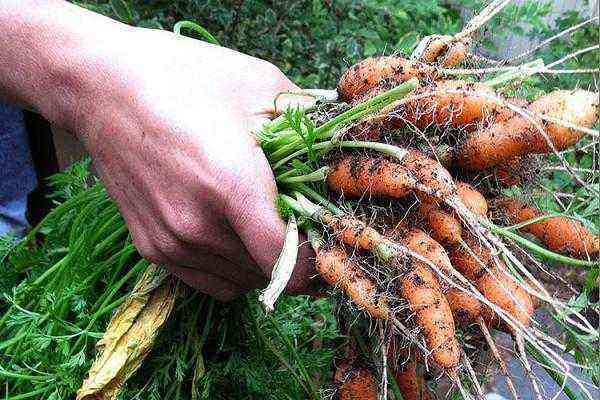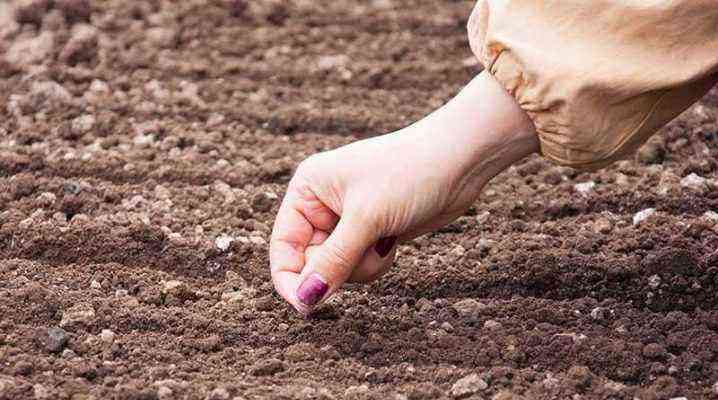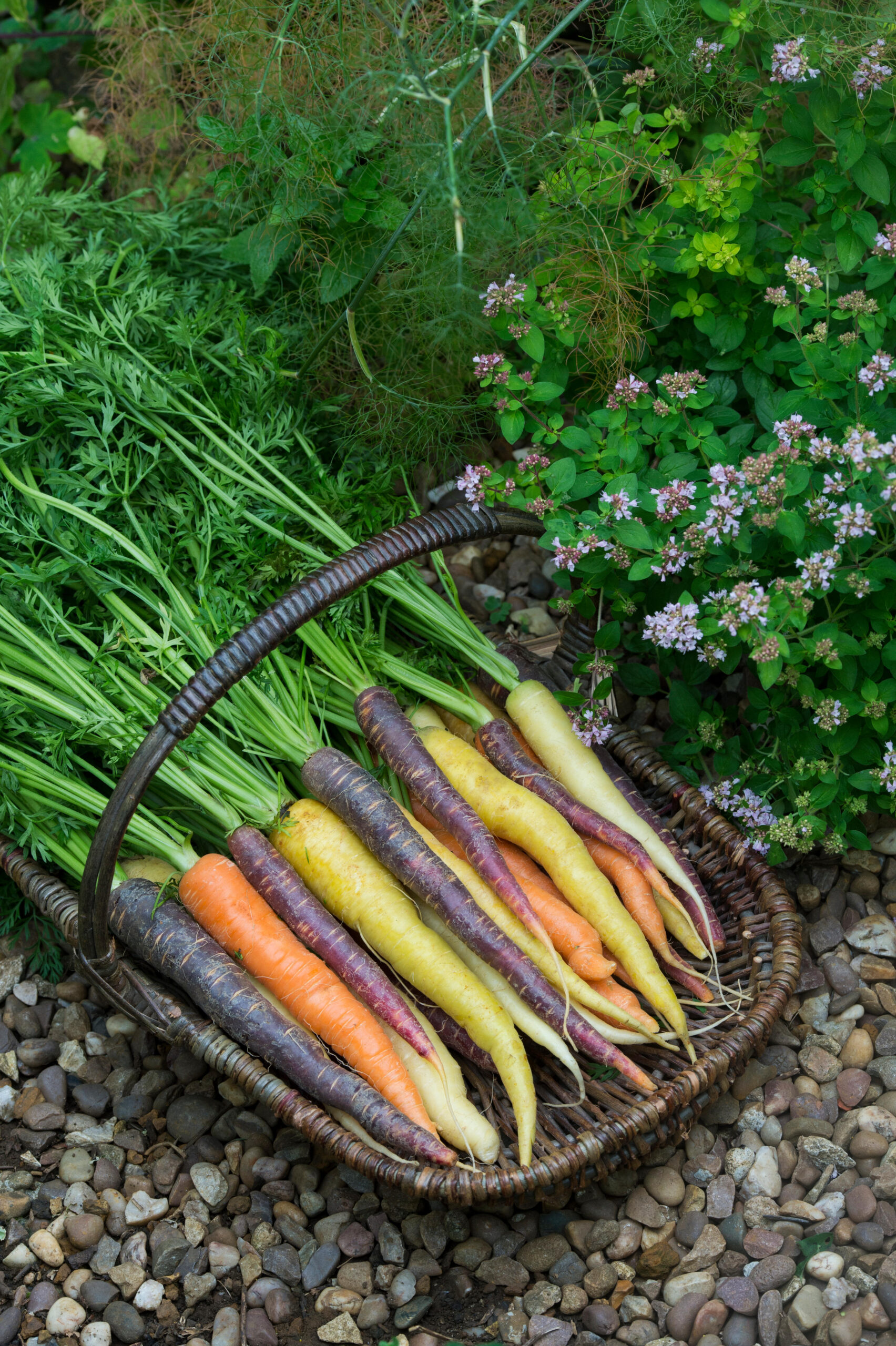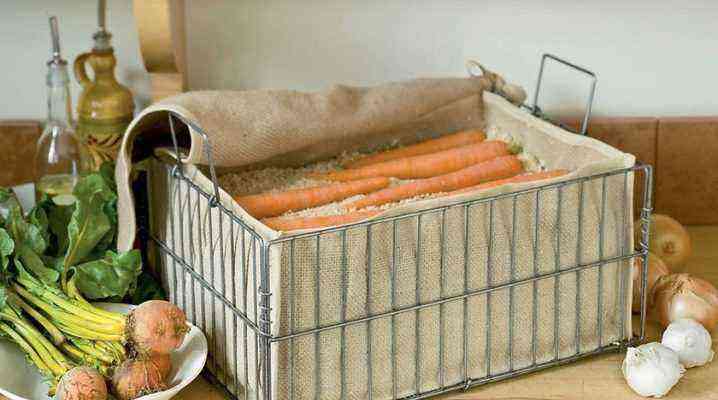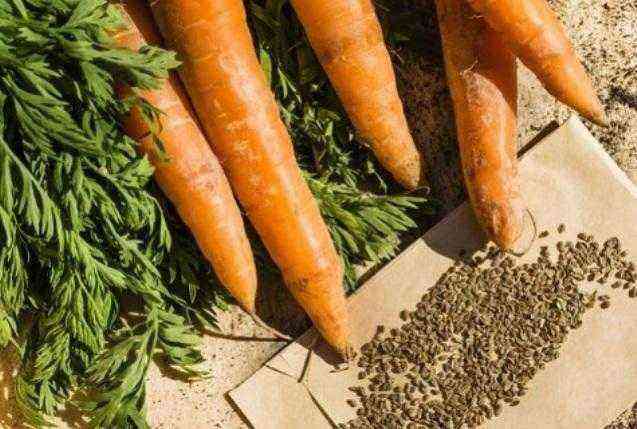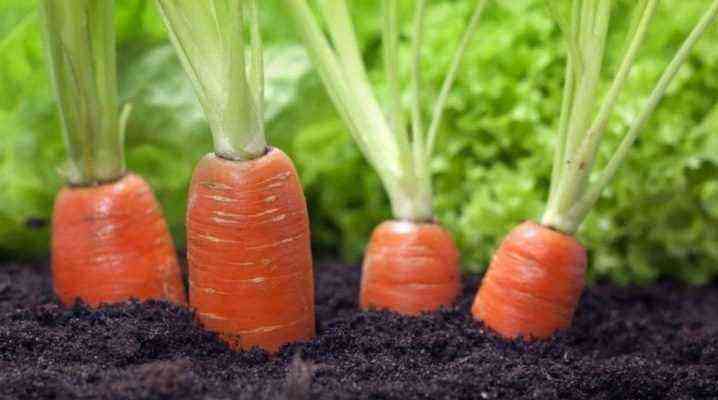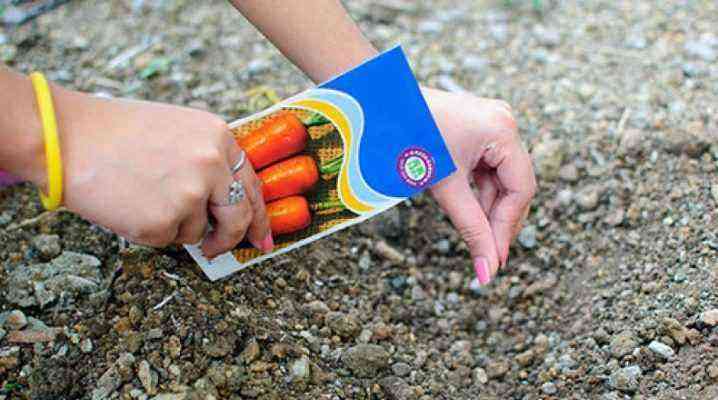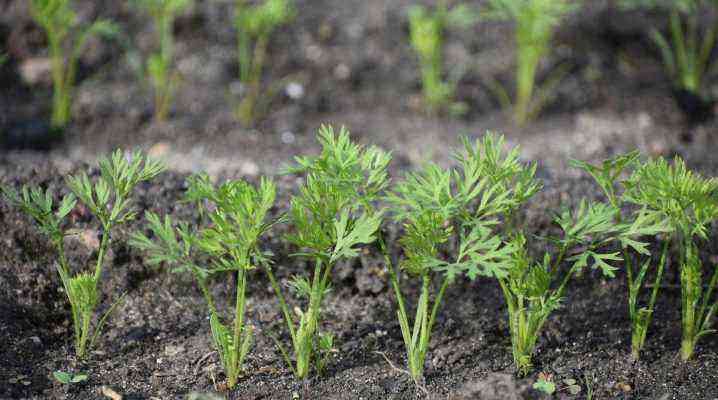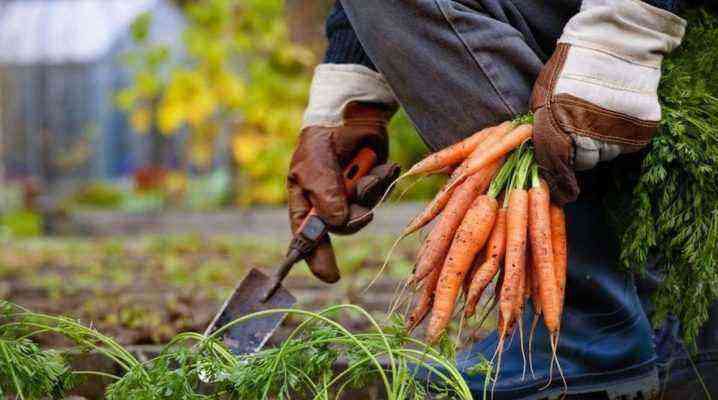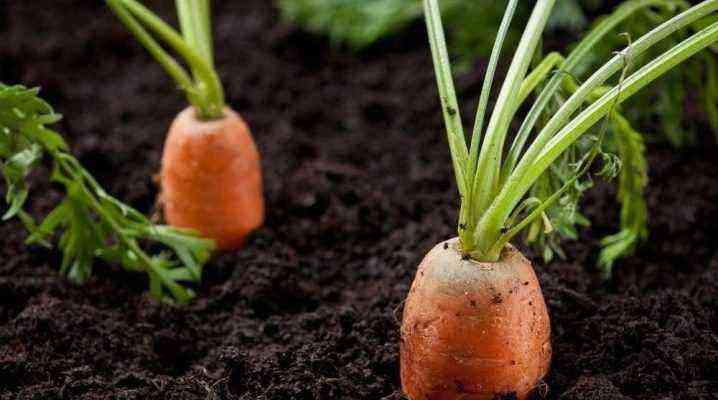Carrot is a biennial (rarely annual or perennial) plant belonging to the plant kingdom, o
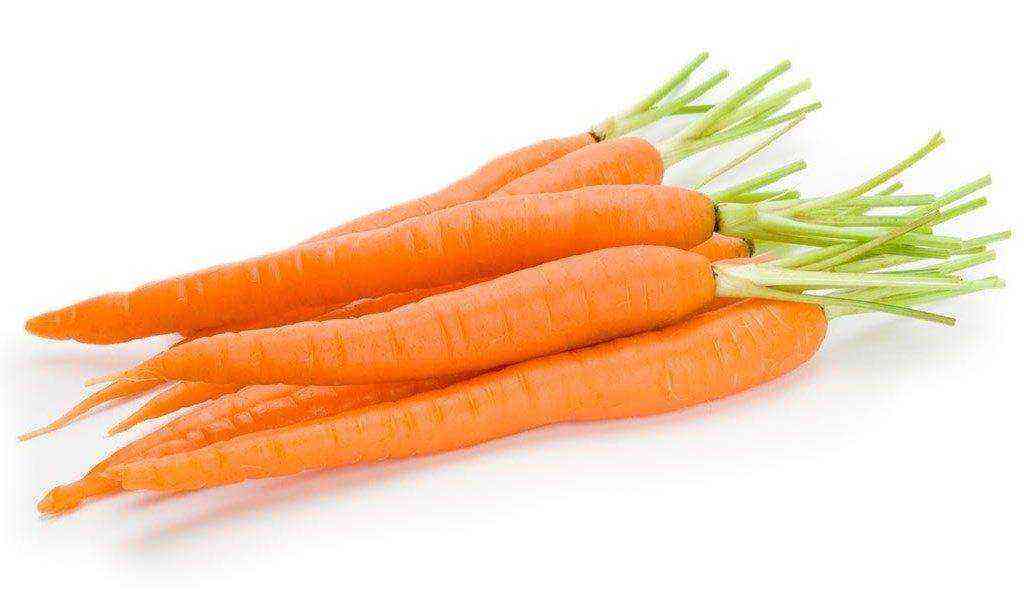
Carrot: plant description, characteristics and photos
In the first season of growth, the plant forms a root crop and a lush bunch of pinnate, strongly dissected green leaves. Carrot roots are dense and fleshy, weighing up to 0,5 kg or more. Its shape can be cylindrical, truncated-conical or spindle-shaped.

Depending on the species, the color of carrots is yellow, orange, burgundy, orange-red or purple-orange, green, and also white.
The color of carrots depends on the percentage ratio between the pigments of the anthocyanin compounds group and natural dyes from the flavonoid class.
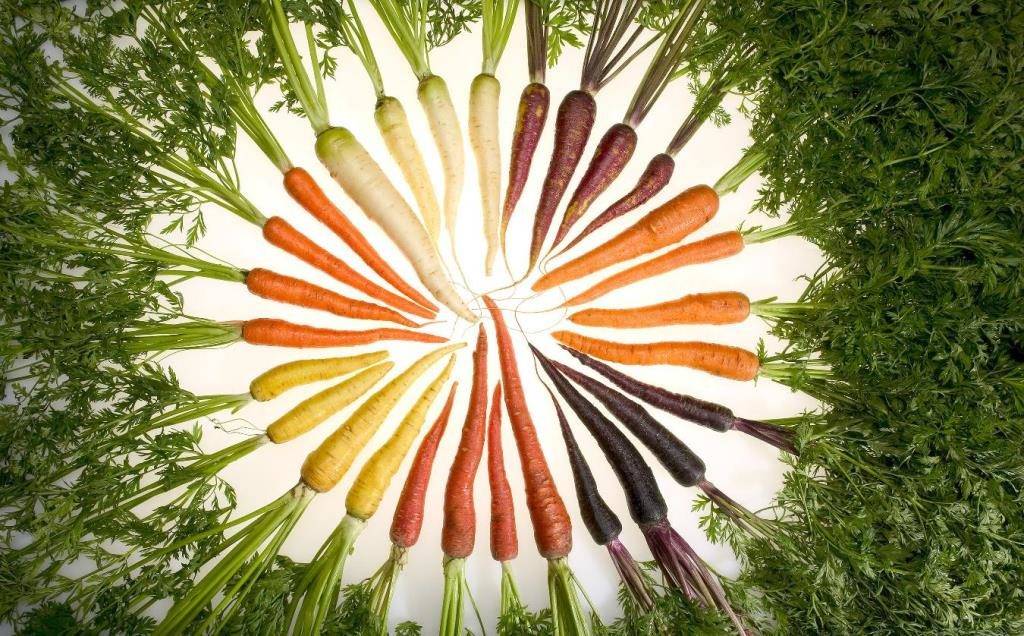
The chemical composition of carrots includes carotene, B vitamins, ascorbic and pantothenic acid, lycopene, phytoene, phytofluene, sugars and other macro- and microelements necessary for the life of the human body.
For the second season, the carrot plant forms a complex inflorescence in the form of a 10-15-ray umbrella with small flowers of red, yellow or white. A carrot fruit up to 4 mm in size has an elliptical shape and contains two seeds.

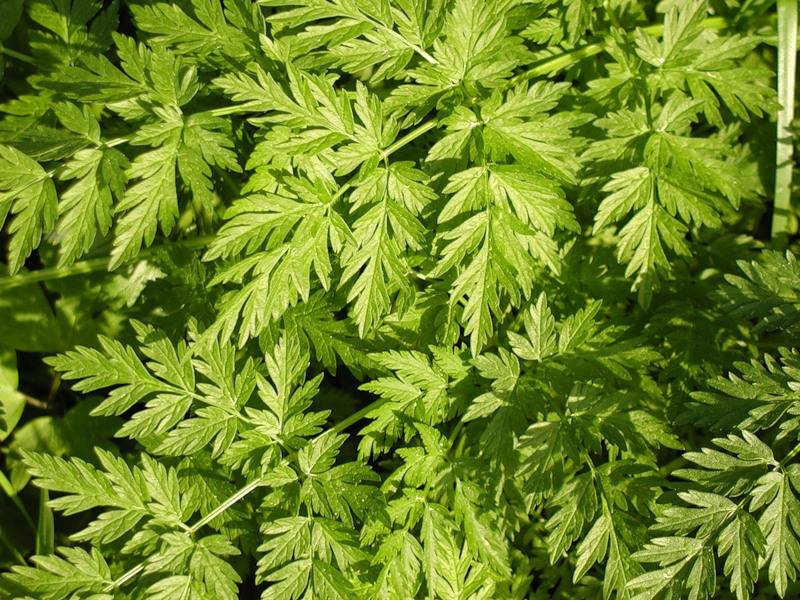
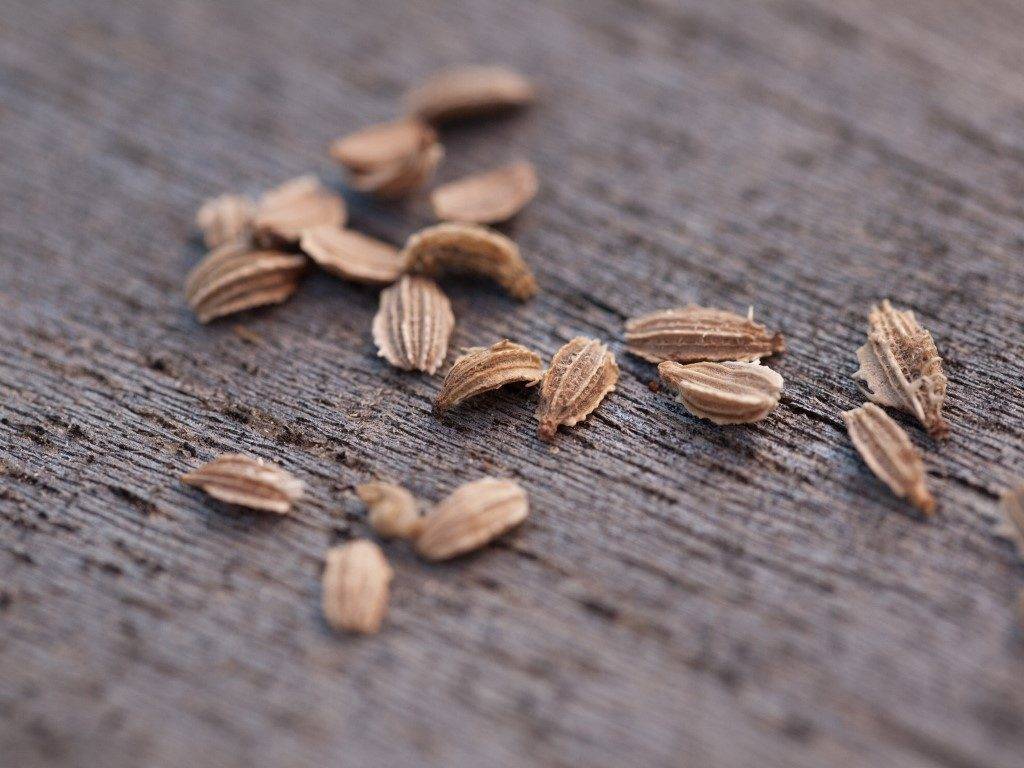
Types and varieties of carrots, names and photos
In the diversity of the genus, 2 varieties of carrots are distinguished:
- wild carrot (Daflight carota)
grows in natural conditions. The root of the plant is fleshy, with a white or yellowish color, absolutely not suitable for human consumption. The stem grows to a height of 0,25-100 cm. Its upper part branches and bears strongly cut leaves of a triangular or ovoid shape. The length of carrot leaves can reach 20 cm with a width of up to 5 cm. The flowering period of the plant lasts from June to July.
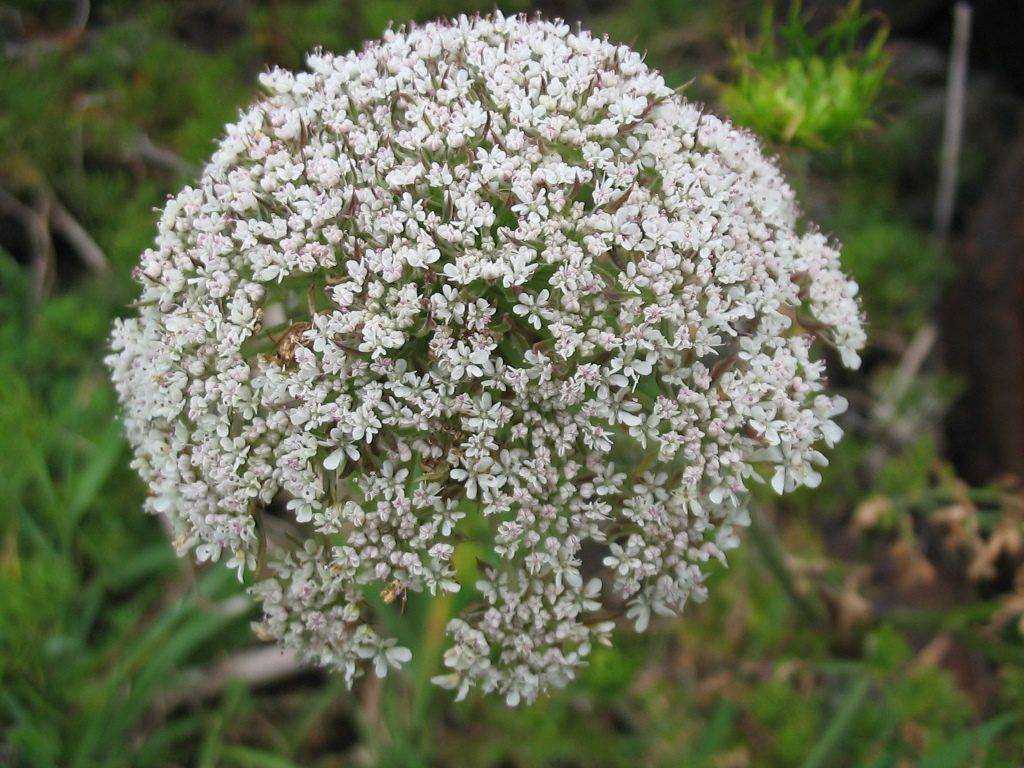
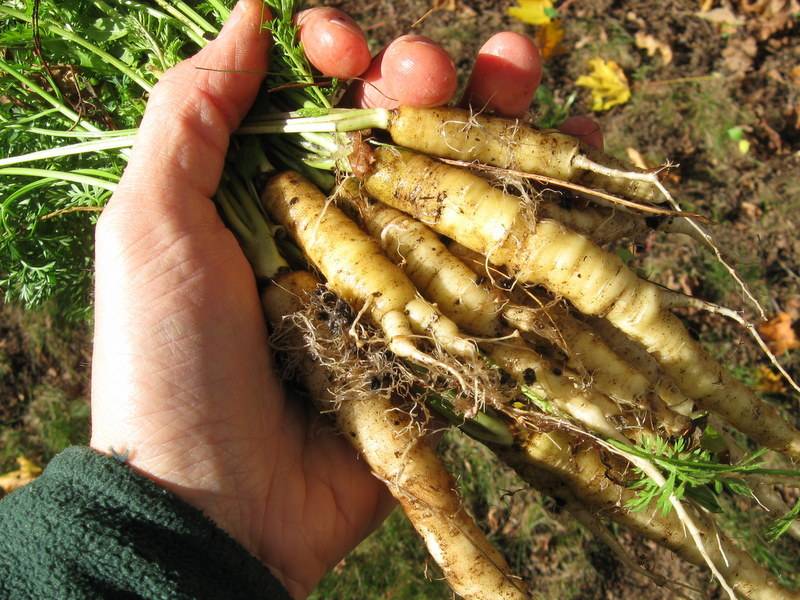
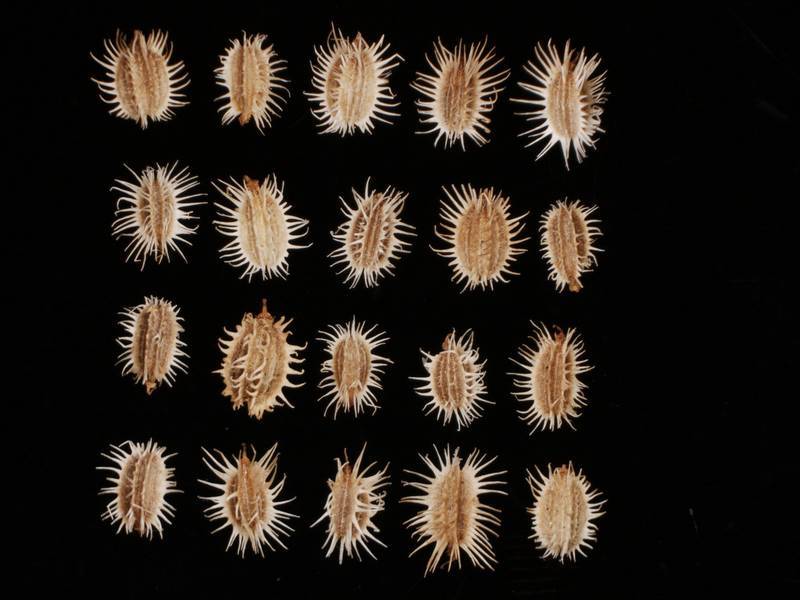
- Sowing carrots (Daucuscarota sativus)
cultivated by man. It is a subspecies of the wild carrot. Within the subspecies, there is a division into fodder and table varieties.
Forage carrots: types, varieties, photos
Forage carrots are grown for inclusion in the diet of cattle and small domestic animals. The root crop of the vegetable is cylindrical or elongated-conical, and its length ranges from 30 to 50 cm. In some varieties of carrots, it may have a cylindrical shape with a rounded end.
- Varieties of fodder white carrots: Arnimkriven white, White green-headed, Belgian white, Berlin giant, White Weibull, Vosges white, Giant white, Thick, Championship.
- Varieties of fodder yellow carrots: Long green-headed giant, Weibull yellow giant, Saalfelder yellow, Lobberich yellow carrot, Semi-long Arnim Kriven, Palatinate golden yellow, Flanders.
- Varieties of fodder red carrots: Long orange-red giant, Long fat blunt giant, Long red Altringham, Long red Brunswick, Giant red, Red fat, Orange-yellow Dippe.
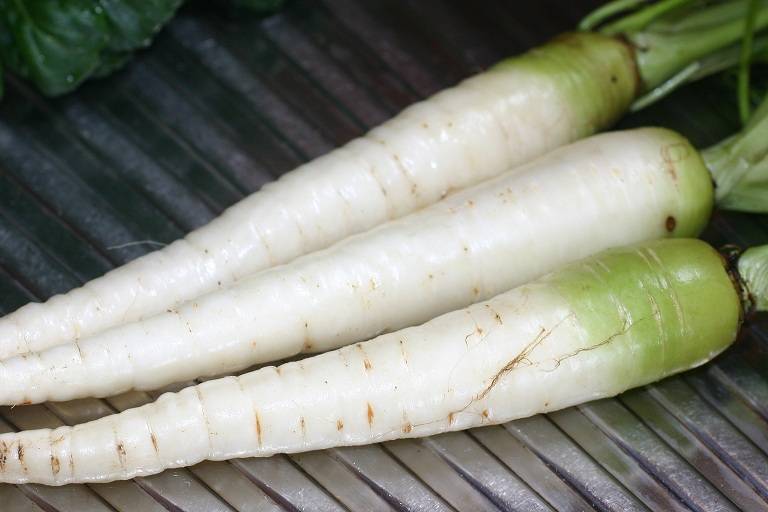

Table carrots: types, varieties, photos
These varieties are grown for human consumption and are divided into early-ripening (early), mid-ripening, late-ripening (late) according to the ripening time.
Early (early ripe) carrots: varieties and photos
The growing season of carrots does not exceed 100 days. Root vegetables are intended for consumption both raw and for heat treatment and are generally not intended for long-term storage. Below are some varieties of early carrots:
- Parisian carrot (carotele carrot)
with dark orange rounded roots, 3 to 6 cm in diameter and weighing up to 60 g, resembling radishes. The pulp of this early carrot is juicy, tender, with a sweet taste.

a variety of early carrots with purple fruits of an elongated conical shape, up to 25 cm long and up to 15-30 mm in diameter, with bright orange pulp.
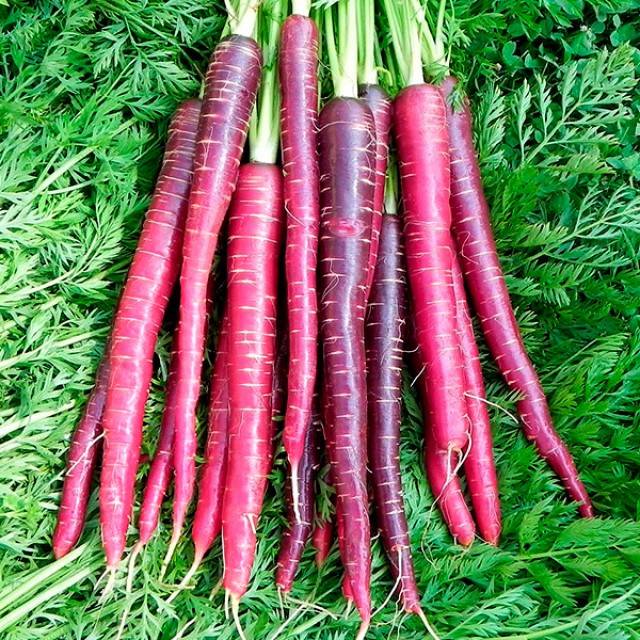
a variety of early carrots with a root crop resembling a cylinder, up to 15-17 cm long and 20-25 mm in diameter. The juicy pulp of a vegetable with a small core has a bright orange color.
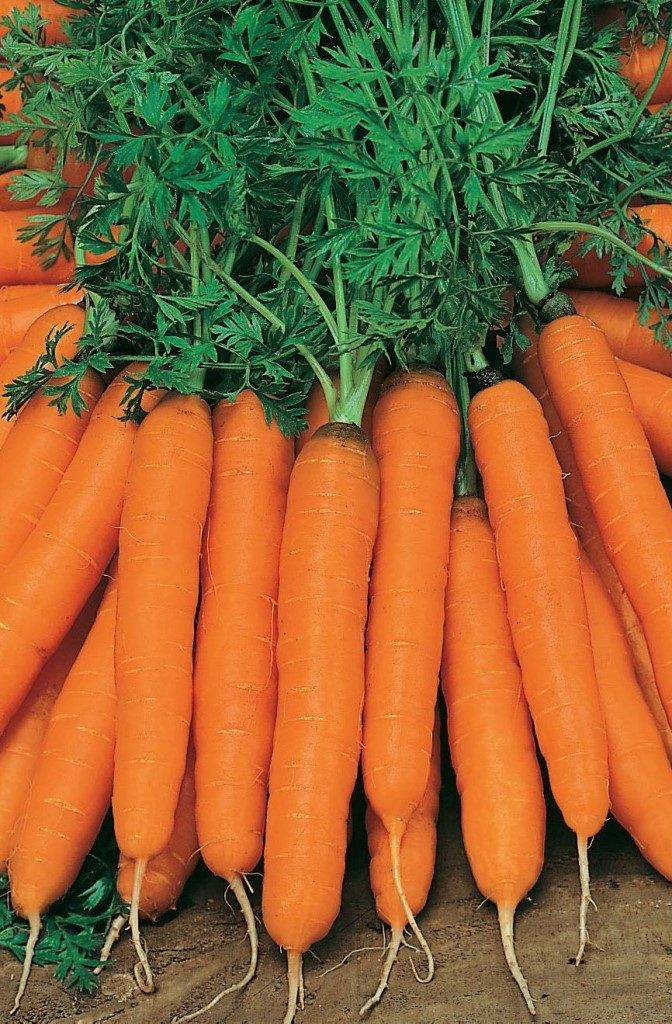
with cylindrical, slightly pointed roots, the length of which reaches 10-15 cm, and weighing up to 60-100g. The pulp of early carrots is sweet and juicy, colored orange. This variety is suitable for long-term storage.

Mid-season varieties of carrots: description and photo
It takes up to 120 days from the moment the tops appear on the surface and until ripeness in carrots of this variety type. Root crops withstand long-term storage and are used as food after cooking. The best mid-season varieties of carrots:
with dense red-orange flesh and a pronounced yellow core. The root crop of carrot has the shape of a truncated cone with a blunt end. Its length does not exceed 15 cm, and its weight is 200 g. The skin is smooth with small “eyes” lentils.

mid-season variety with cylindrical roots and a blunt tip, weighing up to 170 g and up to 13-15 cm long. Carrot skin and its flesh are colored orange. The core is small in size, round or star-shaped in color almost does not differ from the pulp of the fruit. This is the sweetest carrot among many other varieties.

with orange fruits that resemble in appearance a long truncated cone. With a weight of about 130 g and a diameter of 5-6 cm, the length of carrots can reach 20-25 cm. In terms of beta-carotene content, this carrot variety is ahead of other varieties, regardless of the ripening period.
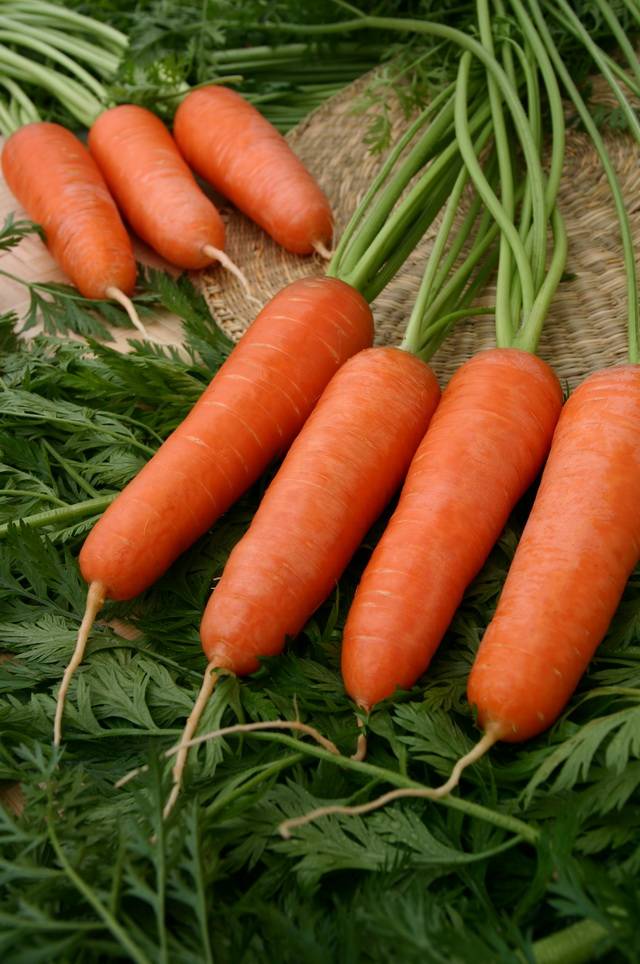
mid-season variety with roots that have a cylindrical shape and a blunt tip. The pulp is juicy and sweet, colored orange. The length of carrots of this variety does not exceed 20 cm, and the weight is 200 g.
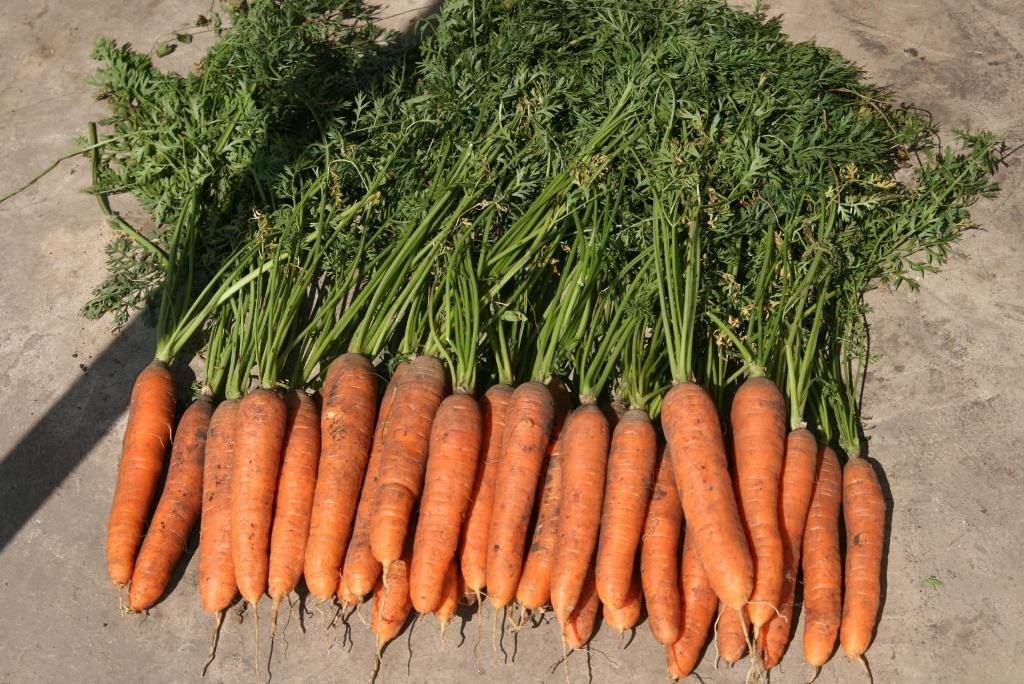
Late varieties of carrots: description and photo
The growing season of carrots of this species lasts up to 140 days. Late carrots have good taste and can be used both raw and after heat treatment. Carrot fruits have a long shelf life, up to a new harvest. The best varieties of late carrots:
with large blunt cylindrical roots and dense orange flesh. The length of individual fruits can reach 30 cm, and the weight of these giants is 200 g.
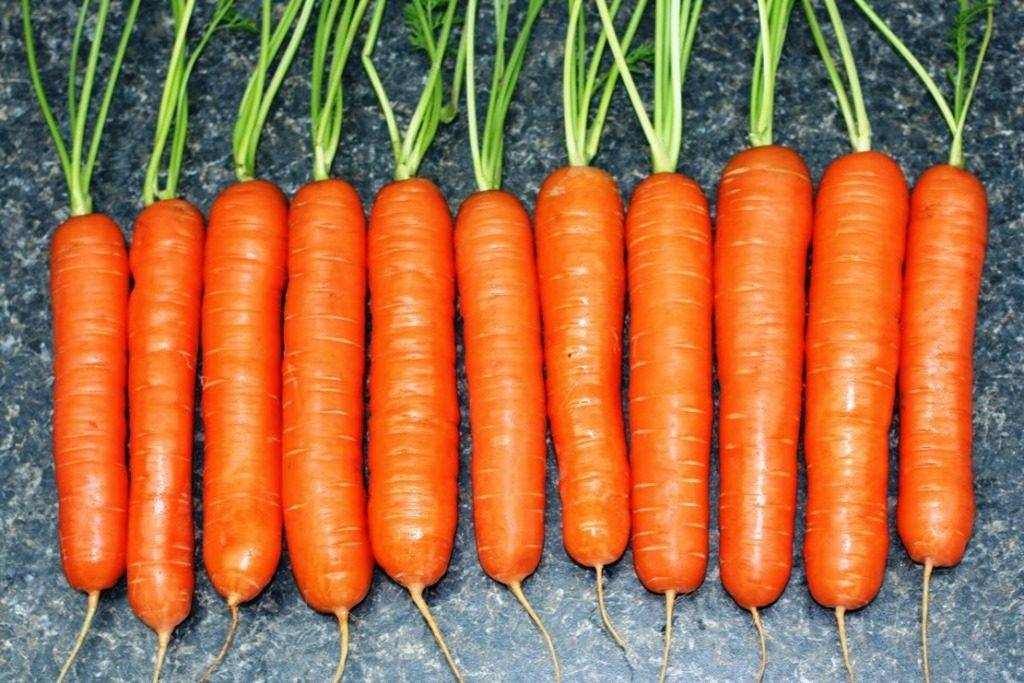
with bright orange conical fruits and a blunt nose. The length of individual specimens may exceed 35-39 cm, and weight 200 g.
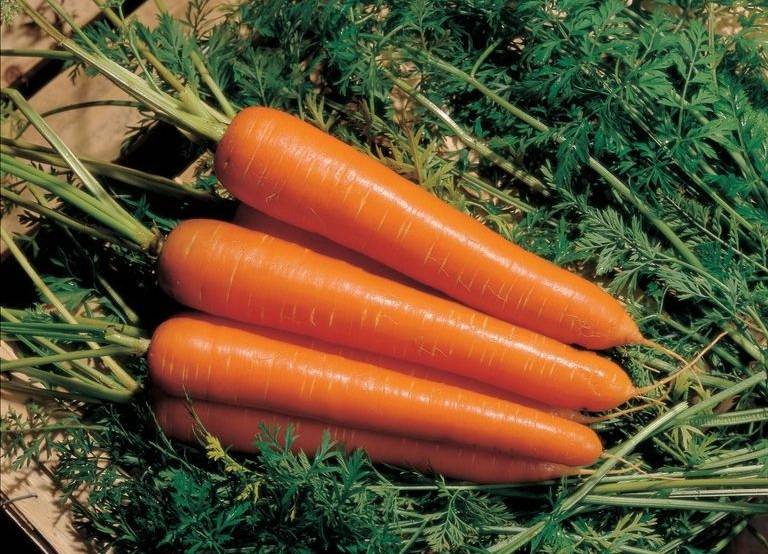
late variety of carrots with large roots and yellow juicy pulp, having a spindle-shaped appearance. Their length ranges from 20 to 25 cm, and the weight of an average carrot reaches 200 grams. A very productive variety.

with cylindrical fruits, the length of which does not exceed 20-25 cm, and the weight is 150-180 g. The dense and juicy pulp of carrots of this variety is painted in a bright red-orange color.
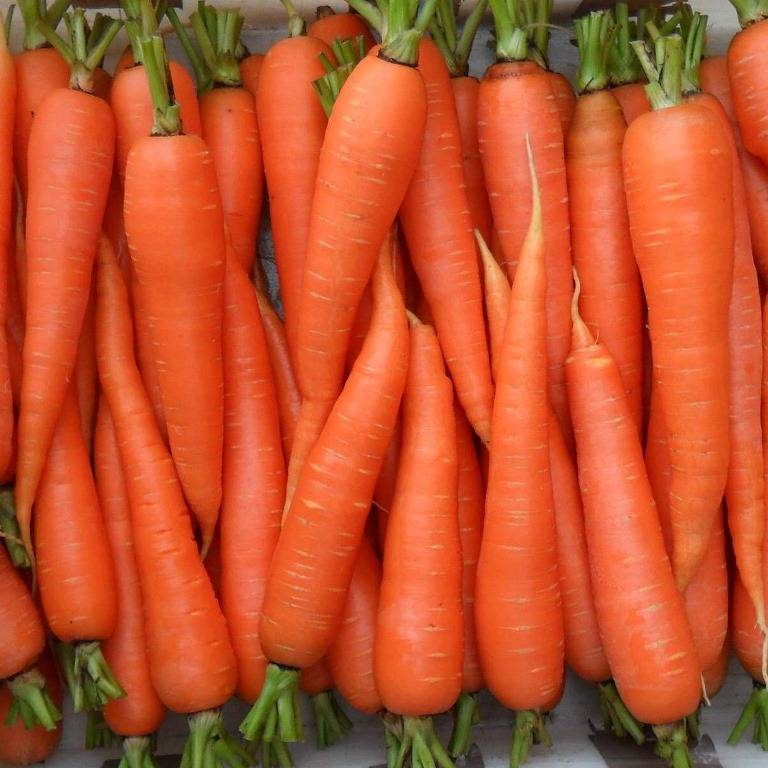
Where does carrot grow?
The distribution area of wild carrots is very wide and includes the countries of the Mediterranean region: Israel and Spain, France and Egypt, Spain and Turkey, Tunisia and Italy. It grows in Austria and Ireland, Germany and the Netherlands, Switzerland and the UK. There is a lot of it in Australia and on the African continent. This plant is widespread in all countries of the post-Soviet space. Wild carrot grows in forest clearings and edges, along roads and ravines. Carrot cultivars are grown in all regions with a mild or temperate climate; only areas with arid climates and harsh conditions of the far north are not suitable for growing carrots.
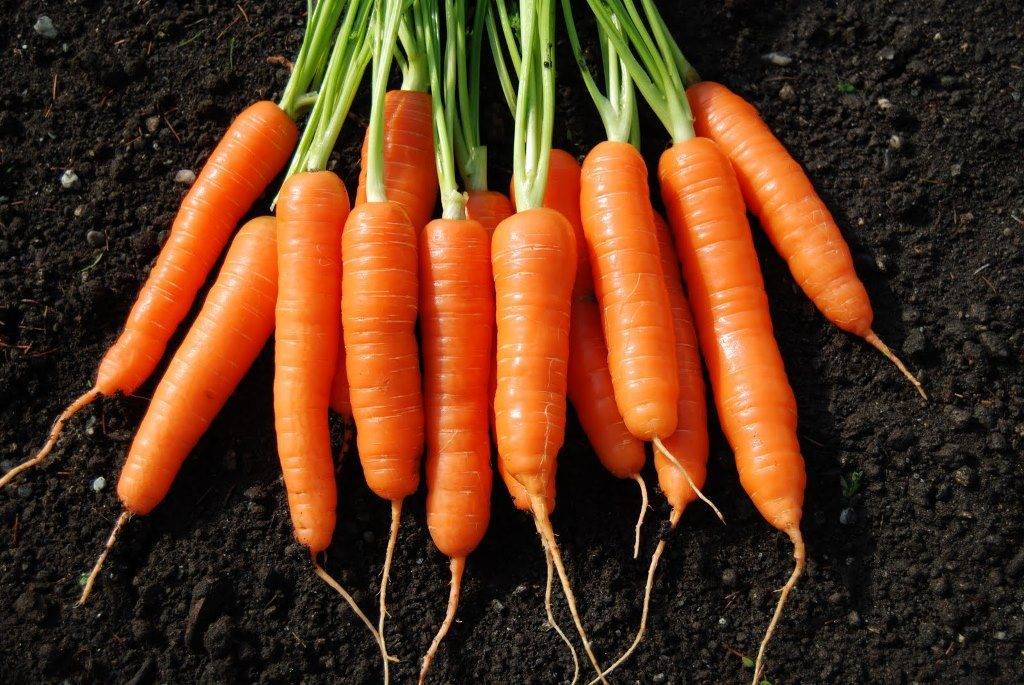
Carrots: useful properties, vitamins and minerals. The use of carrots
In addition to the wide use of carrots in cooking raw or after heat treatment, this plant is successfully used in medicine and cosmetology. Dioscorides and Avicenna also mentioned the beneficial properties of carrots in their writings.
The beneficial properties of carrots are explained by the huge content of vitamins: B, C, PP, E, K. It contains beta-carotene, which is a precursor of vitamin A. And this vegetable also has a huge mineral composition: iron, potassium, phosphorus, magnesium, cobalt , copper, iodine, zinc, chromium, nickel, fluorine.
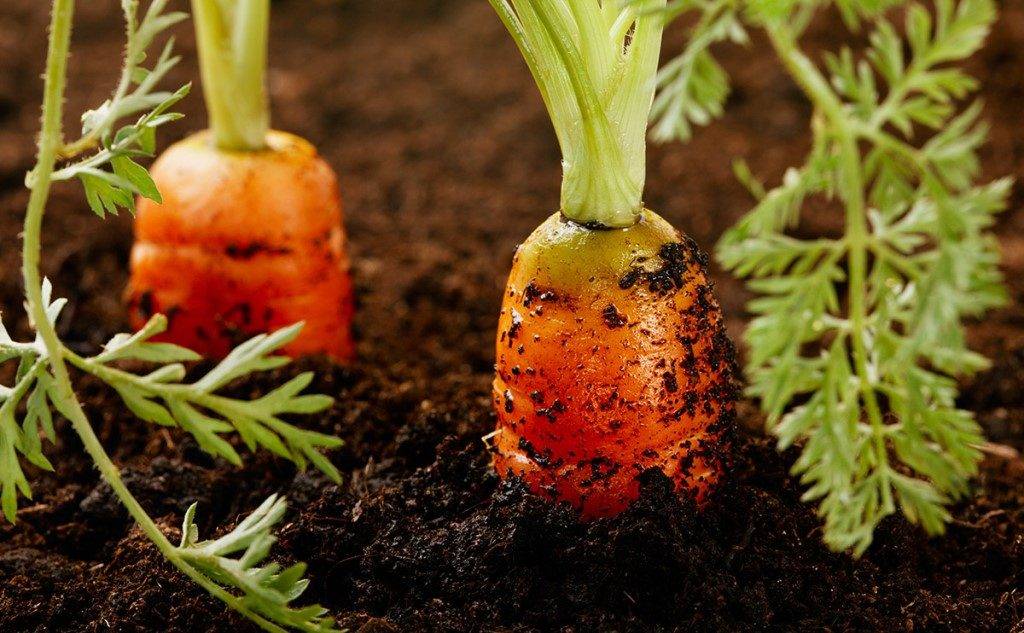
For medicinal purposes, both root crops and carrot seeds are used. Carrot juice is an indispensable tool for the prevention of beriberi, stabilization of the redox processes of the body, taking place at the cellular level.
In addition, freshly squeezed carrot juice is prescribed as an anti-inflammatory and antiseptic agent, for some disorders in the gastrointestinal tract, as well as for normalizing the processes of carbohydrate metabolism in the body.

The xanthophyll contained in carrots is a natural blocker for the development of cancer cells, and lutein protects the retina from exposure to the ultraviolet part of the spectrum. Extracts from the pulp of carrots are used for the treatment of urolithiasis and pathologies of the bile ducts. They are part of the drug “Urolesan”.
From the seeds of the plant, an antispasmodic drug “Daukarin” is made, similar in its action to “Papaverine”. In addition, essential oils are extracted from carrot seeds, which are used to make cosmetics.
back to content ↑
Carrot tops: useful properties
- Carrot tops contain 6 times more vitamin C than the carrot itself.
- It contains a huge amount of chlorophyll, which cleanses the blood, lymph nodes and adrenal glands.
- A large amount of potassium and vitamin K (which is not found in the root crop, but is found in the tops of carrots) lowers blood pressure, maintains a normal metabolism, prevents osteoporosis and heart disease.
- Carrot leaf juice is used as an antiseptic.
- Useful and tea from carrot tops. It is recommended to drink it regularly at bedtime for people who suffer from edema, have problems with the kidneys and urinary system.
Harm of carrots and contraindications
- Eating carrots in large quantities can lead to excess beta-carotene and carotenemia (yellow skin color).
- Carrot consumption should be limited to heavy smokers, and non-smokers should also not go on carrot diets.
- With exacerbations of ulcerative processes, diabetes mellitus and problems with the thyroid gland, it is not recommended to consume carrots in large quantities.
- Carrots are grown industrially using mineral fertilizers. For this reason, if you regularly consume carrots, it is recommended that you find a reputable supplier that sells nitrate-free vegetables.
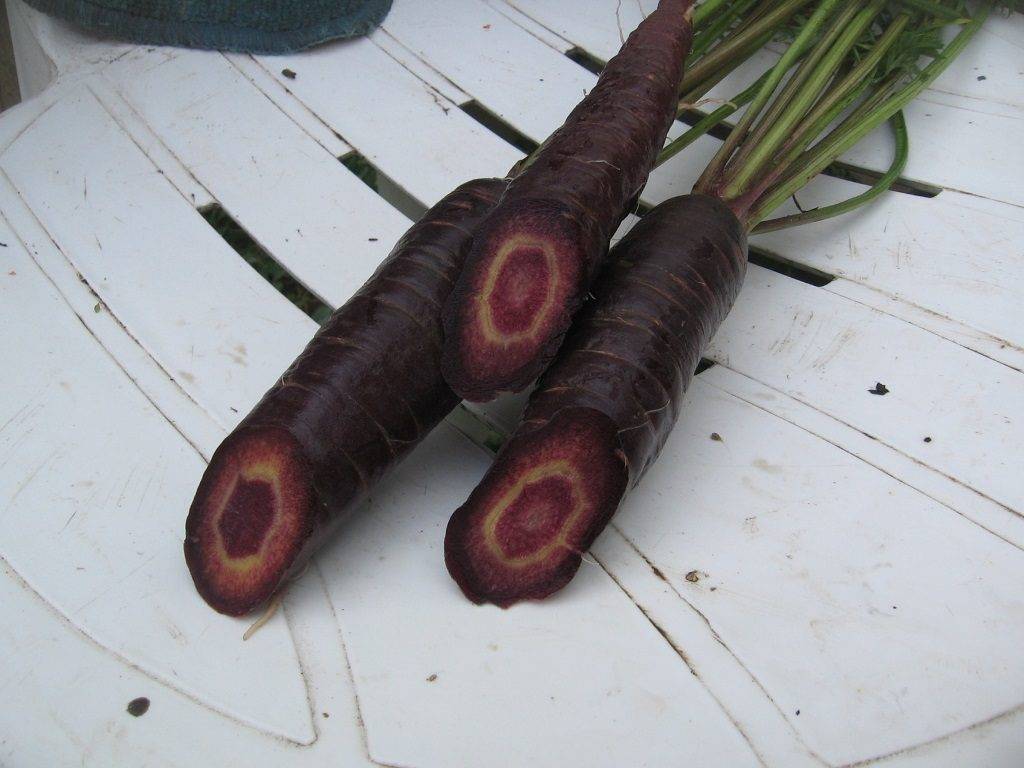
Planting and growing carrots. How and when to plant carrots?
Sowing carrots should be carried out in the soil at its temperature of 4-6 0C. Therefore, the planting dates for carrots of early varieties fall in mid-April, and for mid-season and late varieties – from the second decade of April to the second week of May. Many gardeners are wondering if it is possible to plant carrots in June. In principle, you can plant mid-season varieties, but do not forget to water the bed regularly (especially if your area experiences heat during the summer months) and prepare to harvest no earlier than October.
For planting carrots, even areas well-lit by the sun are selected, on which cucumbers, zucchini, tomatoes, garlic or onions used to grow. Soil should not be used after parsley, fennel, cumin, dill and beans because these crops are very depleting of the soil.
The preparation of the selected site begins in the fall. To do this, it is saturated with complex fertilizers and humus, then dug up to a depth of 30-35 cm. Before planting carrots in the spring, the site is leveled.
Processing carrot seeds before planting
Before planting, carrot seeds are subjected to a special treatment to increase germination (you can choose one of the ways to prepare carrot seeds for planting):
- It is necessary to soak the seeds of carrots in an aqueous tincture of wood ash for one day. The temperature of the nutrient solution should be 300C. During the treatment, the solution must be replaced with a new one at least 6 times. After that, carrot seeds are washed with clean water and placed for several days in a cool place (refrigerator).
- seeds placed in a bag of dense fabric are immersed for 20-30 minutes in a container with hot water, the temperature of which is at least 500C, after which they are sharply cooled with cold water.
- before sowing, carrot seeds are poured into a canvas bag, buried in the ground to a depth of 20-25 cm and kept in this state for ten days.
- carrot seeds intended for planting are saturated with oxygen for 20 hours in a plant growth regulator solution (Epin or Silk solutions). For this, barbaters or aquarium compressors are used.
Planting carrots with seeds in the open ground
After the treatment, carrot seeds are ready for planting in the ground. How to plant carrots in the ground without thinning? There is a tricky and easy way to avoid thinning carrots in the future: for this, narrow strips are cut from toilet paper, on which droplets of flour paste are applied at intervals of 3-4 cm, and then prepared seeds are dipped on them. After the glue dries, the strips are folded in half and twisted into a loose roll.

For sowing carrots, shallow grooves are prepared (no more than 2-3 cm in depth), they are well moistened and ribbons with seeds are unfolded in them. If you have not made such tapes, then you can plant carrot seeds directly into the ground at a distance of 3-4 cm. After that, the furrows are covered with soil and mulched with a layer of finely chopped straw or peat.
Such a step will prevent the appearance of a dense crust on the soil surface, which interferes with the free germination of carrot seeds. The distance between adjacent grooves must be at least 20 cm.
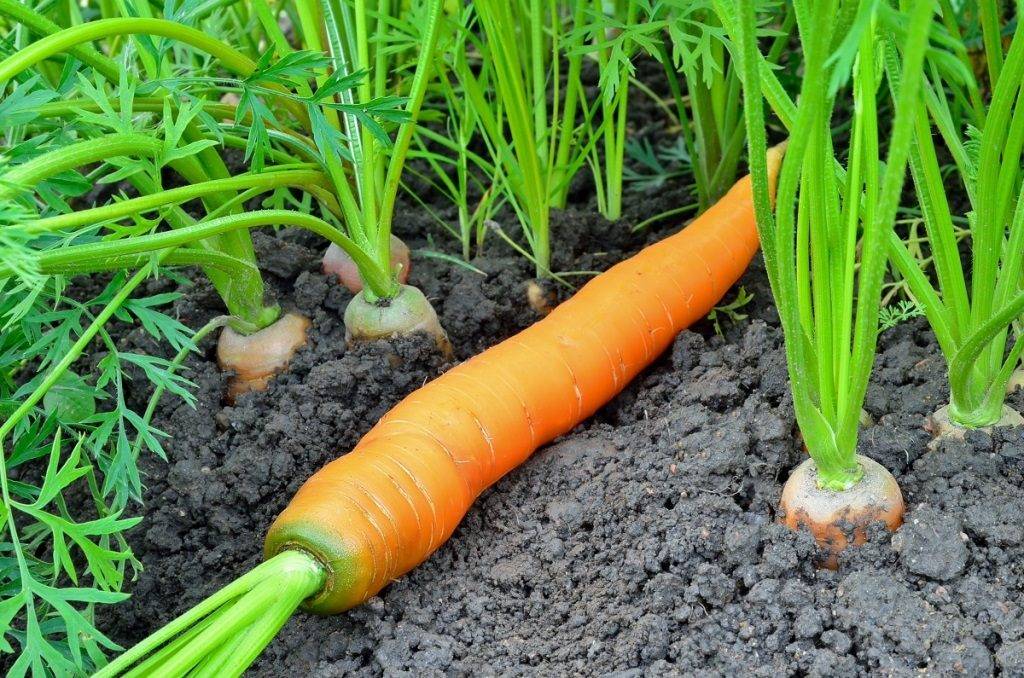
Planting carrots in autumn
On light soils (sandy and sandy loamy) you can plant carrots in the fall. Landing is carried out in the last days of October or in the first decade of November. The technology of winter planting carrots is no different from spring. With the onset of heat and the disappearance of the snow cover, the site is covered with a dense plastic film and kept in this state until germination. At the beginning of the growing season, the aisles need to be intensively loosened and hilled plants. After the grown tops of carrots close up, loosening is stopped.
Care of carrots in open ground. Watering carrots. How often to water carrots in the open field?
Many gardeners wonder how to water carrots. Despite the fact that the plant tolerates drought well, it is recommended to water carrots regularly, avoiding complete drying of the soil. Usually, watering is done once a week in specially prepared grooves, preventing water from entering the tops, as this can lead to the occurrence of fungal diseases.
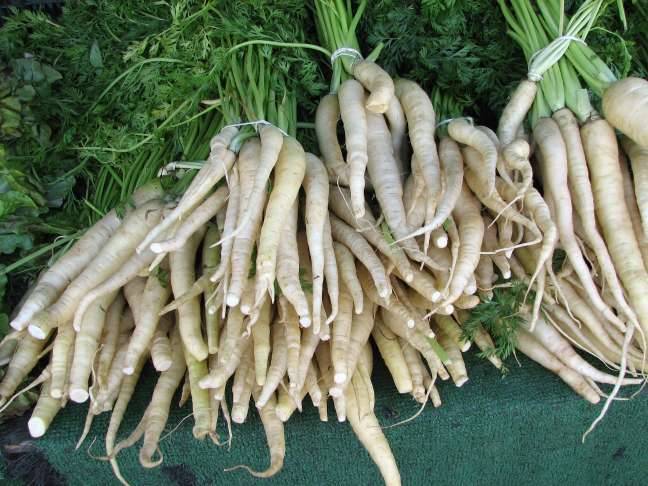
Carrot nutrition. What to feed carrots?
To provide the plant with all the necessary microelements, at least three feedings of carrots are carried out for the entire growing season. The first fertilization is done immediately after the appearance of the first shoots. The remaining two are produced at intervals of a month. For feeding carrots, only mineral fertilizers are used. The composition of the necessary “nutritional cocktail” per 10 liters of water includes: potassium nitrate (20 g), superphosphate (15 g), urea (15 g), nitrophoska (1 tablespoon), wood ash (2 cups). Top dressing is carried out in the soil moistened after watering.
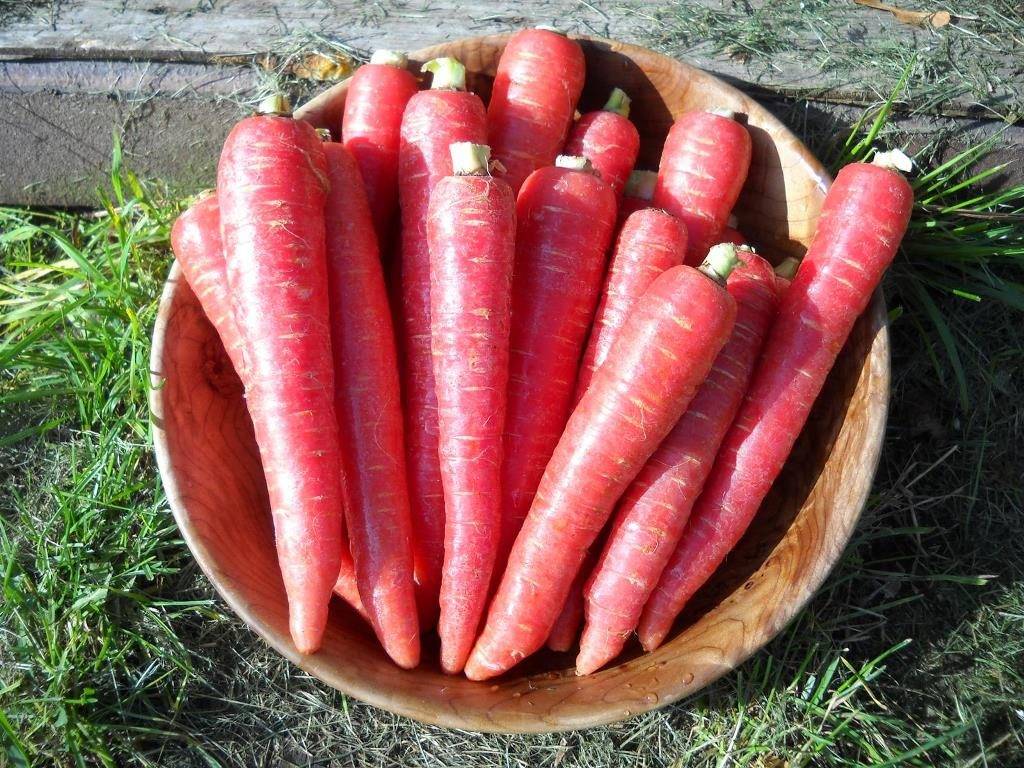
How to thin out carrots correctly?
The first time carrots are thinned out when several leaves appear. Water the soil well before each thinning, as it will be easier to pull the plant out of moist soil, and the remaining carrots will be less damaged. When thinning, pull the carrot sprouts straight up, otherwise the root of a neighboring carrot may break off. It will be necessary to make several thinnings in order not to remove the excess (suddenly, some of the sprouts will be damaged by pests) and at the same time not interfere with the growth of neighboring root crops. If you want to grow small sweet carrots, leave small distances between root vegetables (2-3 cm). The vegetable will grow medium-sized, but sweet. If you want to get large carrots, increase the interval between plants to 5-7 cm, a dense planting will prevent root crops from growing to large sizes.
Can carrots be transplanted?
It is worth noting that there is no point in transplanting carrots, since it will immediately begin to wither and will not recover. If you need to transplant torn root crops to a new bed, then do it immediately into pre-prepared holes without bending the root rod. Otherwise, the carrot will grow deformed. After that, the transplanted carrots should be well watered.
Why do carrots turn yellow in the garden?
The reason for this is rhizoctoniosis – a fungal disease that affects beets, carrots, parsley and turnips. The causative agents of this disease live in the soil and on root crops. Affected carrot leaves turn yellow and dry out, and root crops begin to rot during storage. To avoid this disease in carrots, do not plant them in waterlogged areas. And also do not plant new crops on the affected area earlier than after 3 years.

Why won’t carrots sprout?
- Carrot seeds may be of poor quality. Perhaps their shelf life has been exceeded;
- Carrots are planted at a shallow depth, and the seeds have washed away;
- Seeds were planted at a greater depth than necessary. On loamy soils, it is better to plant carrots at a shallower depth than advised.
- Insufficient watering. Carrots can take a long time to germinate, so they need to be well watered. At a temperature of 15 degrees, carrots sprout in 2 weeks, but if the temperature is set at more than 20 degrees, then carrots sprout on average in a week.
Carrot pests and control
- carrot fly. This insect begins its harmful activity in late spring as pupae appear from overwintered larvae. Fortunately, it is not difficult to detect signs of carrot fly activity – the bronze color of the carrot tops will testify to it. If proper measures are not taken, the foliage will wither and the carrots will die. Treat your plants with chemicals such as Arrivo, Ziper, Sharpei.
- Carrot blotch. This insect is a bit like a fly, but belongs to the category of fleas. The psyllid appears in March and at the same time begins to lay eggs. In the future, the formed larvae develop directly on the beds, after which they suck out the juices from the leaves of the carrot tops, which leads to their shrinking and drying out. Spray carrot tops with tobacco decoction: pour 1 kg of tobacco waste into 10 liters of warm water and add 30 g of soap, the solution is boiled for 2 hours, filtered and applied as directed.
- Gall nematode. This is a worm-like insect, which is a hard-to-kill pest. This parasite penetrates the root crop, after which swelling and growths appear in the carrots. But the harmful effect is not only the defeat of a particular vegetable. Worm larvae can remain in the soil, multiplying and endangering all new plants. Effective ways to destroy the nematode still do not exist. Therefore, mainly gardeners use preventive measures. Namely, when cultivating the soil and handling seeds, use only a disinfected tool scalded with boiling water. The soil itself can be treated with carbon disulfide, formalin or chloropicrin.
- Carrot aphids. It hibernates on the remains of vegetation that have not been removed since the fall, so the primary method of dealing with this pest is to clean the garden from the remains of plant debris. If, nevertheless, aphids attacked your carrots, a number of measures should be observed:
- In strong heat, water carrots abundantly, the pressure of water will knock insects off the tops;
- Between waterings, dust carrot leaves with sifted ash, which can be mixed 1: 1 with tobacco dust.
- Spray carrots with fermented herbal infusions: Pour boiling water over any freshly cut plants/herbs and ferment in the sun for a week, then strain and use as directed.
- Next to the carrot bed, you can plant marigolds, potatoes, garlic, onions, or other plants that repel aphids.
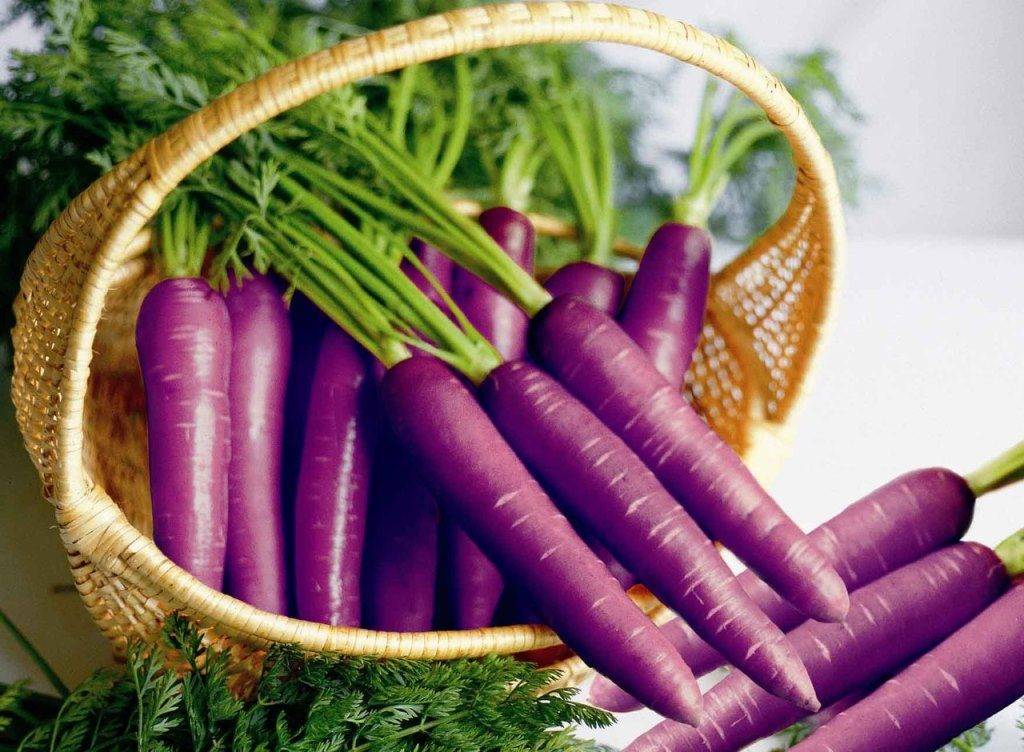
Harvesting carrots. When to harvest carrots?
Harvesting carrots is carried out as the root crops ripen, so the harvest time depends on the variety. Young carrots are pulled out mainly to thin the rows. The next stage of harvesting carrots occurs in July, when early varieties ripen. Mid-season carrots are harvested in August. In the second half of September, they begin to dig up the roots of late varieties of carrots.
The harvest day should be dry and warm. If the soil is light, ripe carrot roots can be pulled out of it by pulling on the tops. Carrots are dug out of dense soil with a shovel or pitchfork. In the extracted root crops, the tops are cut to the head, then they are sorted, removing the damaged carrots for processing. Vegetables selected for storage are treated with a weak solution of potassium permanganate and left under a canopy for 14 days at a temperature of about 140C for drying. After that, carrots are recommended to be stored in the basement.
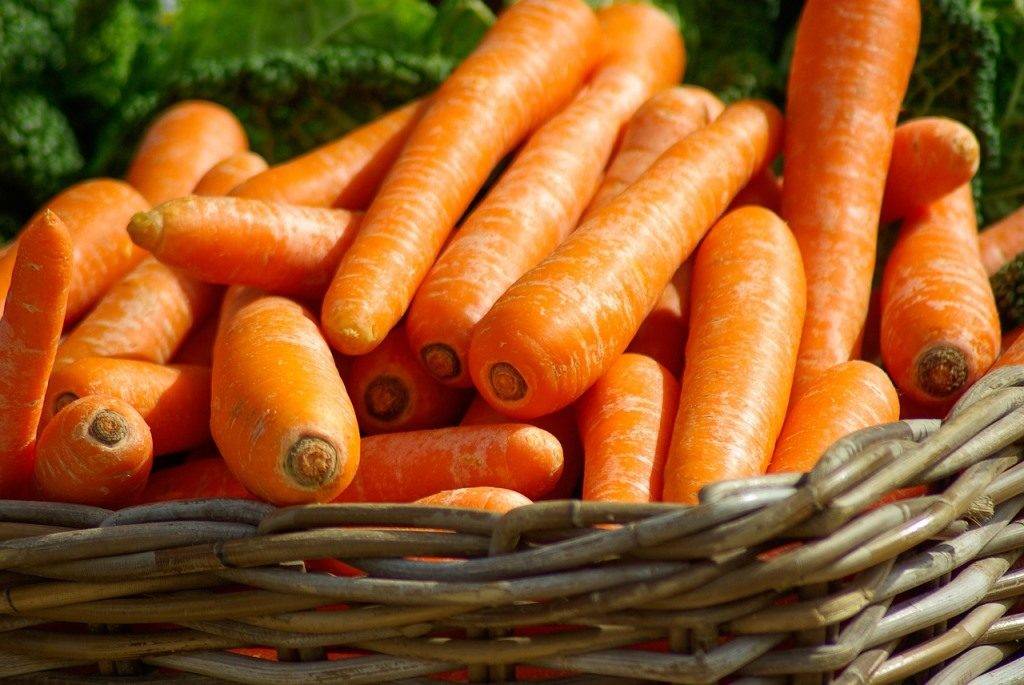
Carrot storage. How to store carrots?
The optimum storage temperature for carrots is from 0 to +40C. To store carrots, use a wooden container with dry river sand. Root crops are laid on a layer of sand up to 4 cm thick, poured onto the bottom of the box so that they do not touch each other. After that, they are covered with a new layer of sand (4-5 cm), on which the next portion of carrots is laid out. The operation is continued until the box is completely filled. Instead of sand, small sawdust of deciduous trees can be used.
Carrots can be stored until next spring by covering them with a thin layer of clay. For this, a clay mash is prepared, resembling thick sour cream in consistency. Each root crop is dipped into the solution and dried, after which the “glazed” vegetables are lowered into the basement. In the absence of a basement, carrots in small quantities can also be stored in the pantry of an apartment, placing it in wooden or cardboard boxes, after pouring it with sand or onion and garlic husks.
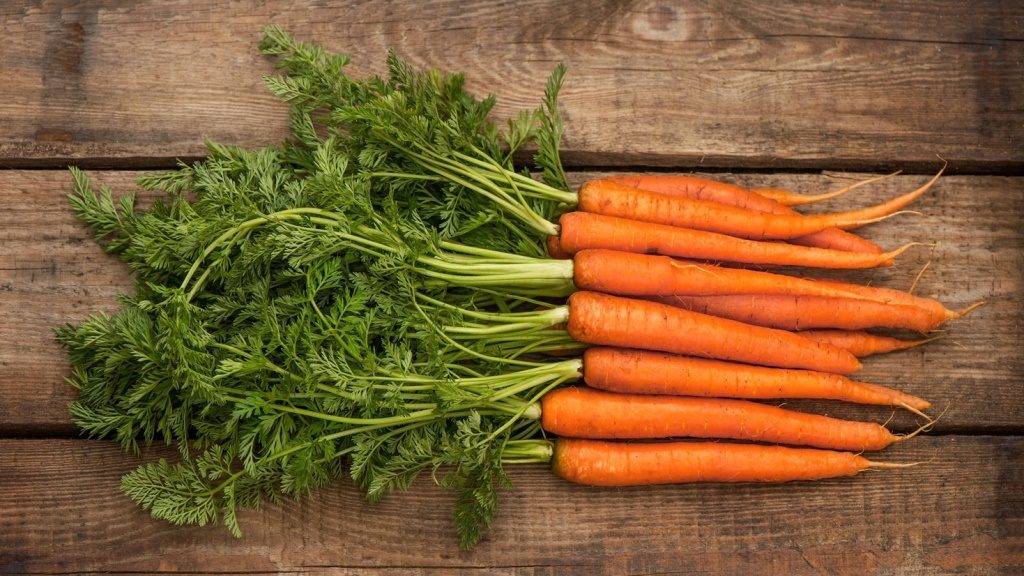
Interesting facts about carrots
- Man has been growing carrots since ancient times. Initially, the root crop was not eaten, only carrot seeds and fragrant leaves were used.
- On the territory of Europe, the culture of carrots appeared in the Middle Ages. In Russia, carrots have been grown since the XNUMXth century.
- The color of carrots was not always red-orange. In ancient Rome, it was white, and in Egypt, purple root crops grew. Vegetables of an orange tint familiar to us appeared only in the XNUMXth century. But these carrots contained very little carotene, so they were pale.
- Recently, the myth that carrots, due to the presence of vitamin A in their roots, which has a positive effect on the development of the visual system, improves vision, was debunked. It was found that the statement about such benefits of carrots appeared during the Second World War in England. In fact, the government, in an attempt to hide the presence of radar in military pilots, contributed to the spread of rumors that carrots in the diet of their pilots accurately hit targets.
- EU regulations require that the jam be made only from fruit. But Portugal produces and exports carrot jam to Europe. Therefore, according to the EU directive, in European countries this plant is classified as both a vegetable and a fruit.

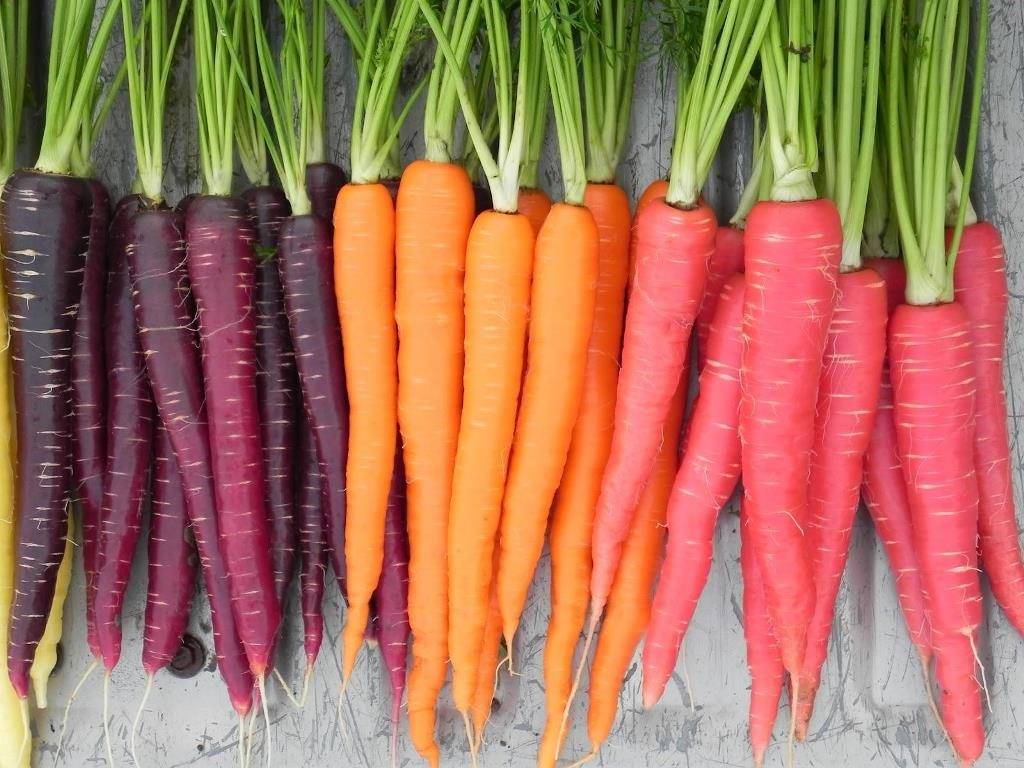
Liked the article? Share with friends:
